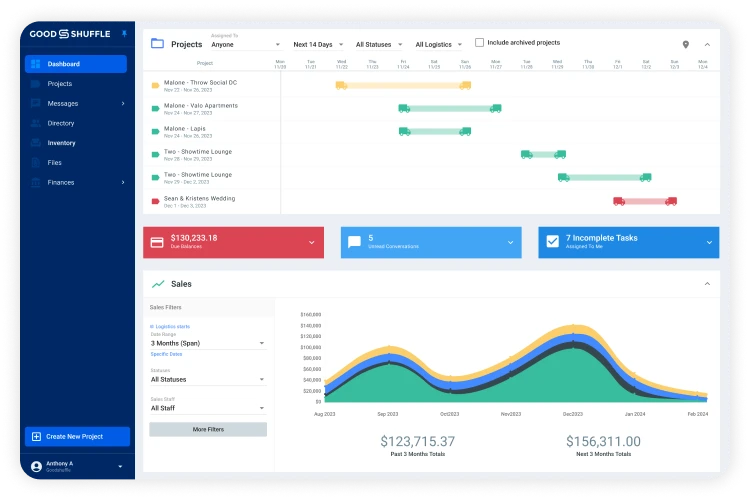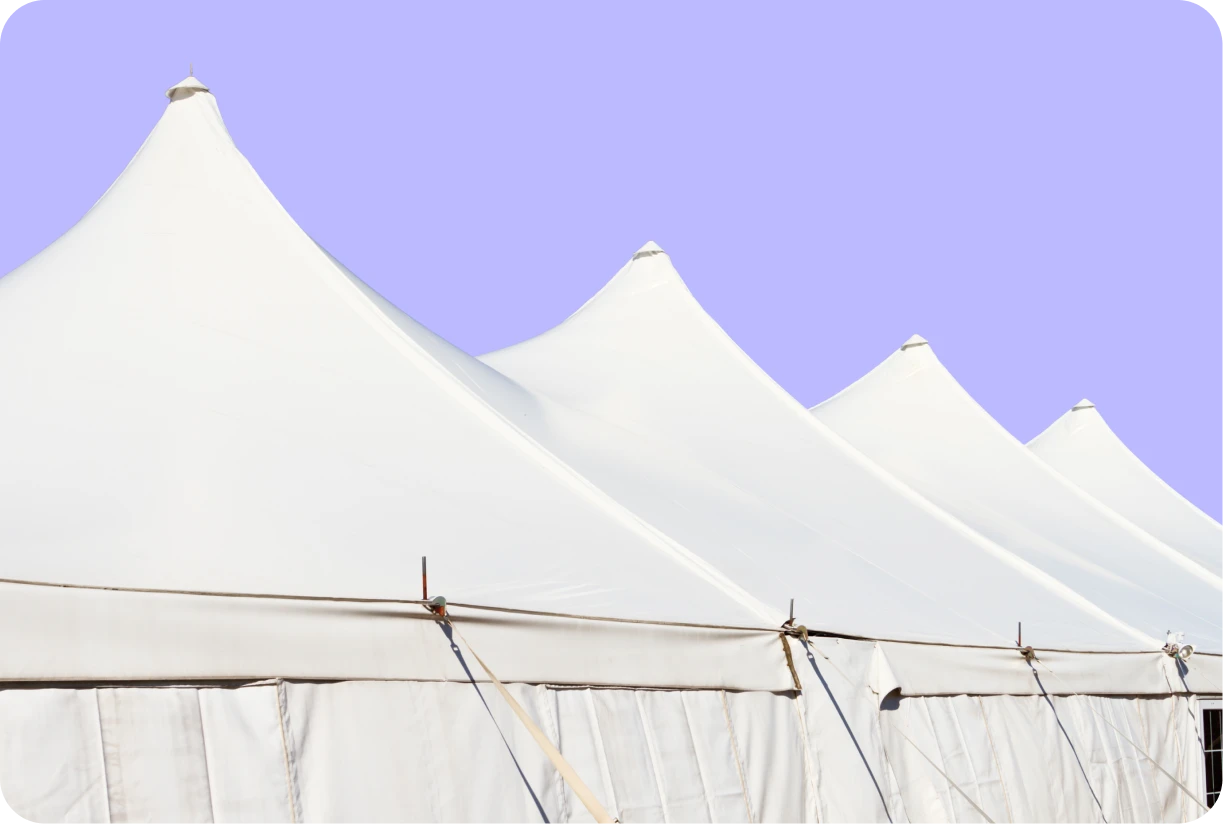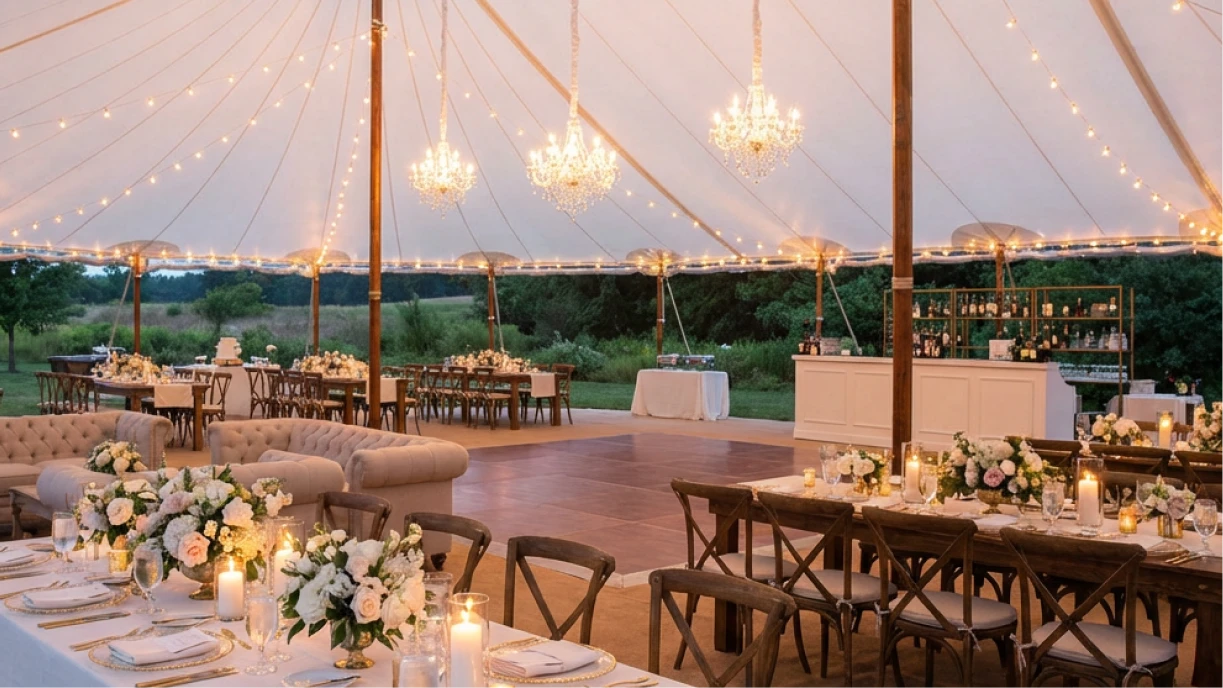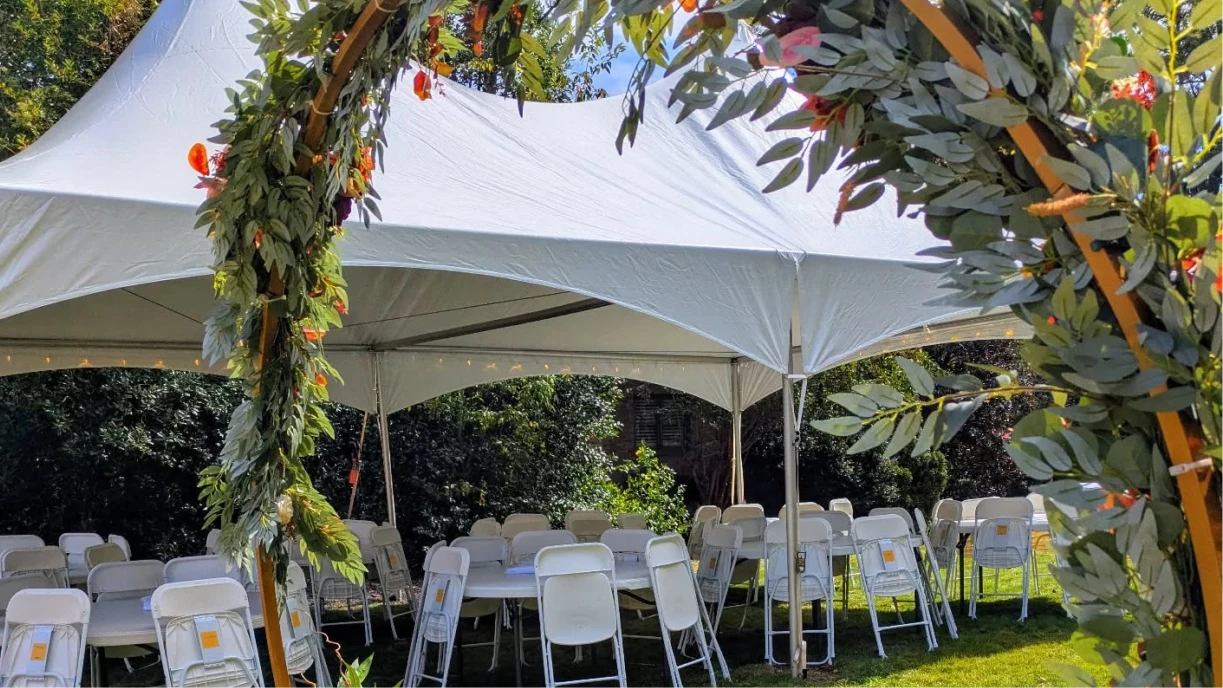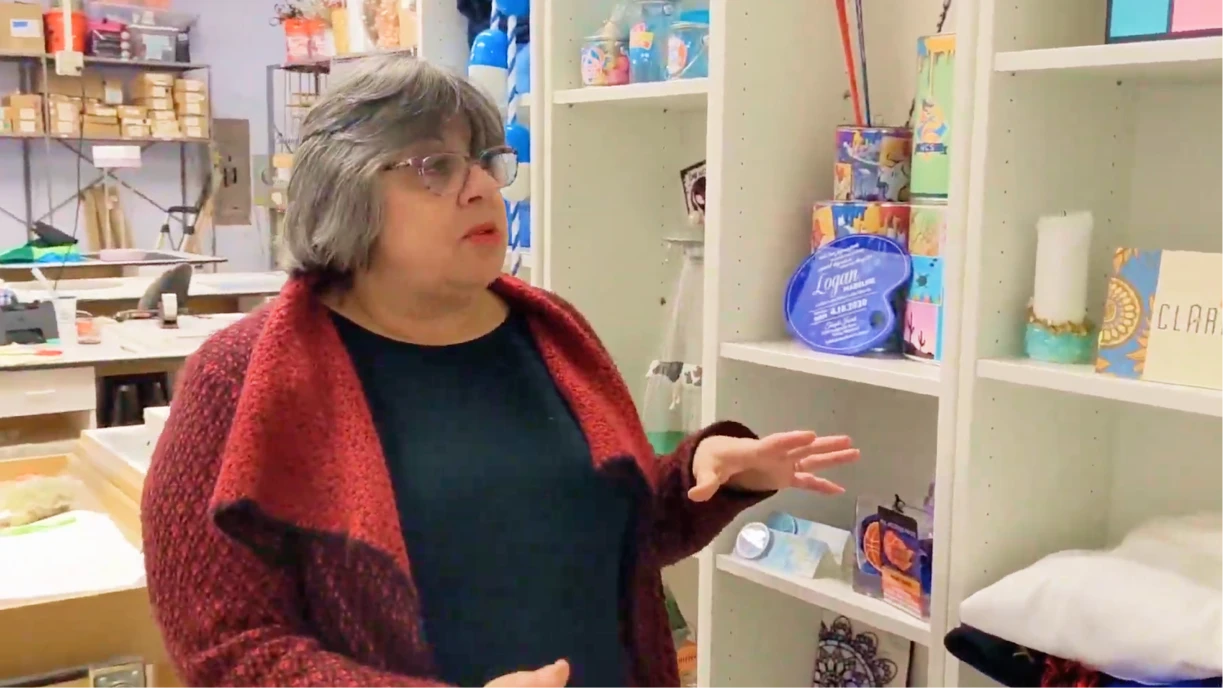Picture this: You’ve just finished setting up a stunning tent for a client’s big day, only to watch in frustration as a sudden gust of wind lifts it off the ground, sending chairs and decorations flying.
Whether it’s during a wedding ceremony or a casual outdoor gathering, the last thing you want is for your tent to collapse and create chaos.
The struggle of battling unpredictable winds is something every event professional can relate to. With the right techniques, you can ensure your setup remains safe and secure, no matter what Mother Nature throws your way.
The 3 Things to Look For In a Sturdy Tent
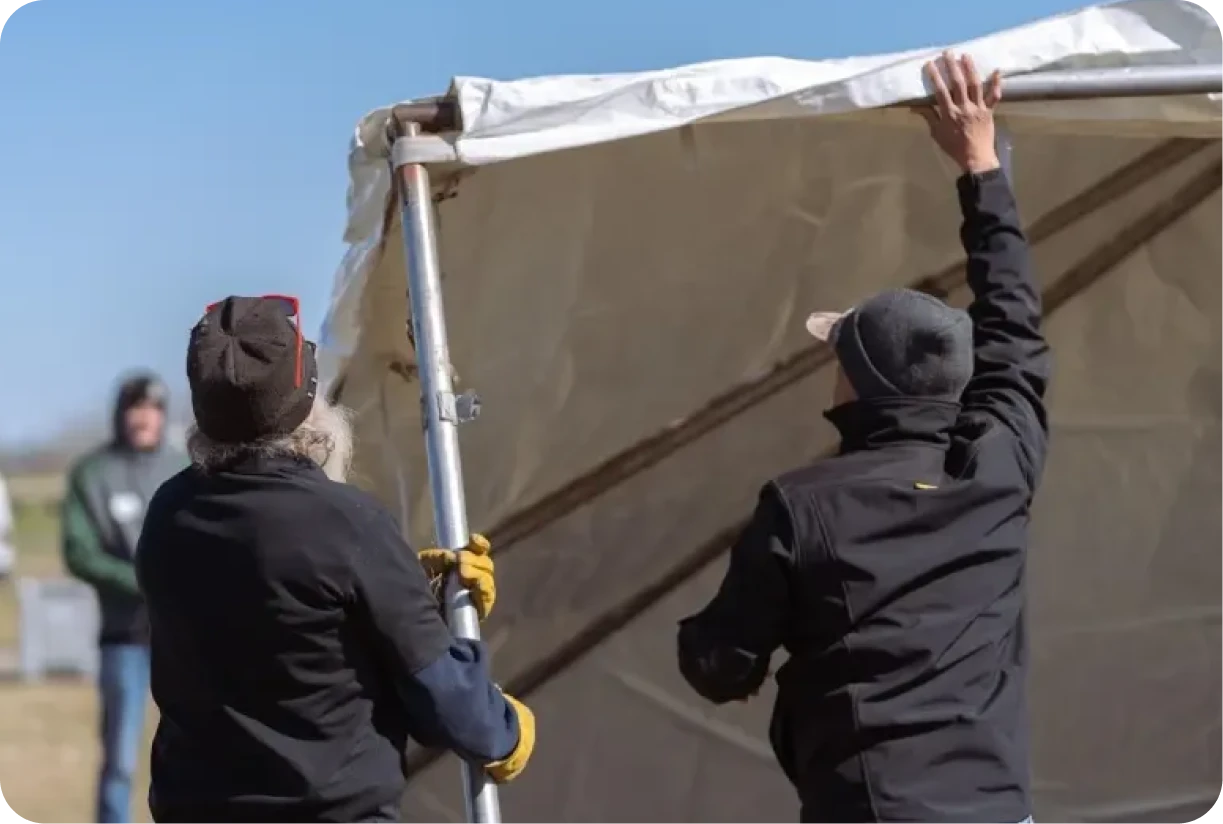
Before we can learn how to secure a canopy in high winds, we need to pick the right tent for windy conditions.
Here are the 3 key factors to consider when picking a canopy that can stand up to windy weather:
1. Size
Smaller canopies are generally better in windy conditions. Their compact size means they catch less wind, making them more stable.
In contrast, larger canopies have a bigger surface area, making them more vulnerable to wind and increasing the risk of being lifted or blown away.
That said, you don’t have to dismiss larger options entirely. But if you do opt for a bigger tent, be selective about its design, and look for sturdy materials (more on that later).
2. Material
You want something that can brave the elements, and that means opting for durable fabrics like reinforced polyester or heavy-duty vinyl, which resist tearing and puncturing while keeping you dry with their water-resistant properties.
Pair that with an anodized aluminum frame (known for its impressive strength-to-weight ratio), and reinforced fabric corners, and you’ve got a winning combination.
3. Design
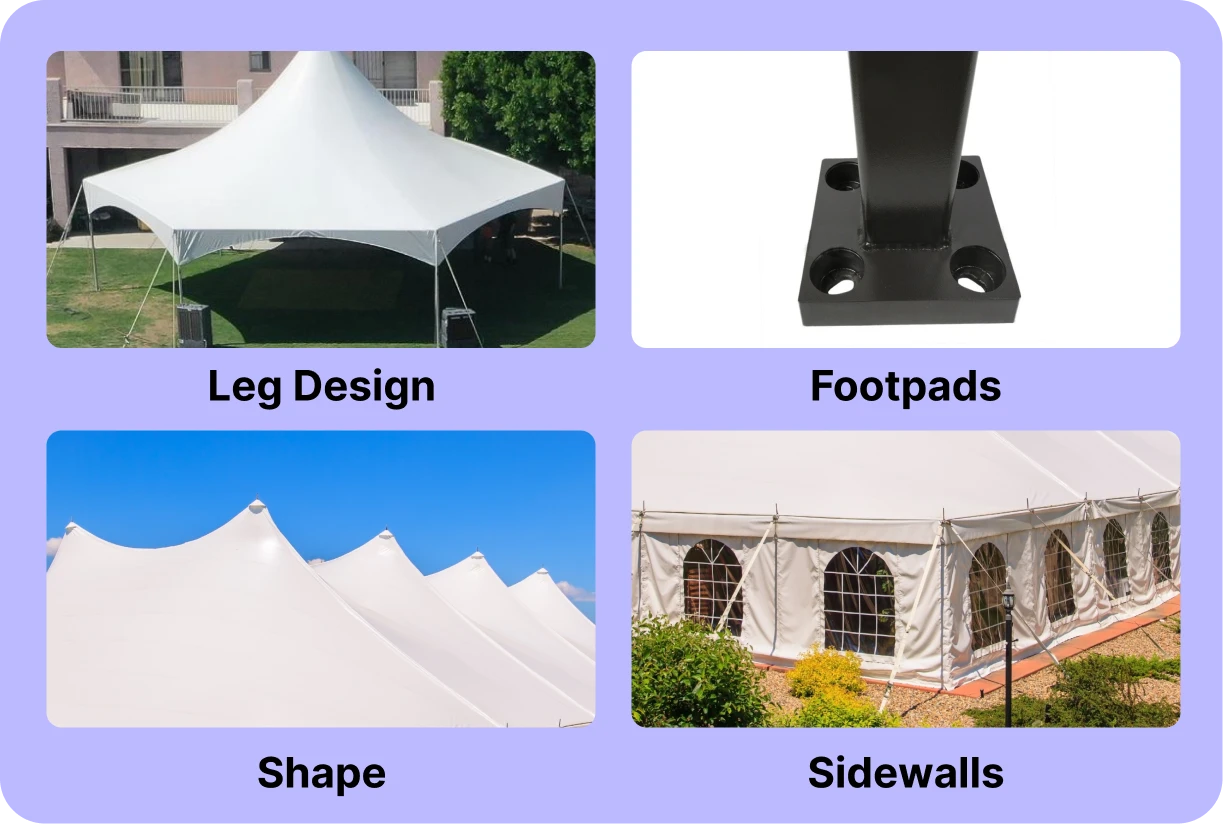
The design of a tent is just as vital as its size and material in keeping your canopy stable in even the toughest conditions. That’s why we’ve curated a list of must-know recommendations to help you choose wisely.
- Leg design: Choose tents with wider diameter legs, particularly those with hexagonal or octagonal profiles. These designs provide greater surface area for balance, keeping the tent more stable.
- Footpads: The thicker the footpad, the better. Opt for square or octagonal footpads (around ¼ inch thick) for better stability and a solid base.
- Shape: Select aerodynamic designs, such as curved or sloped roofs, which effectively cut through the wind. Avoid flat roofs and large side openings that can catch wind.
- Sidewalls: Incorporate sidewalls for added protection against wind and rain. Clear or windowed options allow for visibility while maintaining shelter.
4 Ways to Secure a Canopy in the Wind
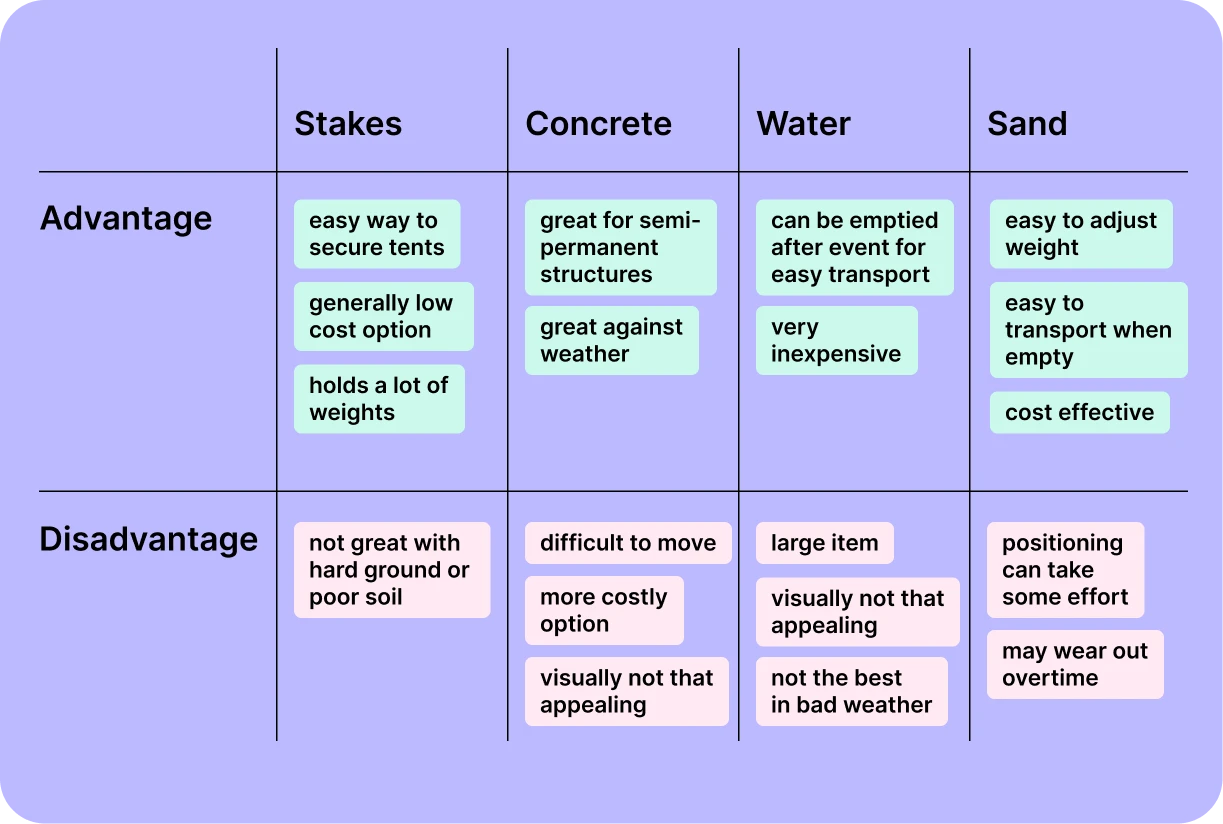
In this section, we’ll explore the four best methods for securing your canopy in high winds, highlighting their advantages and disadvantages to help you choose the best option for your clients.
1. Use Stakes
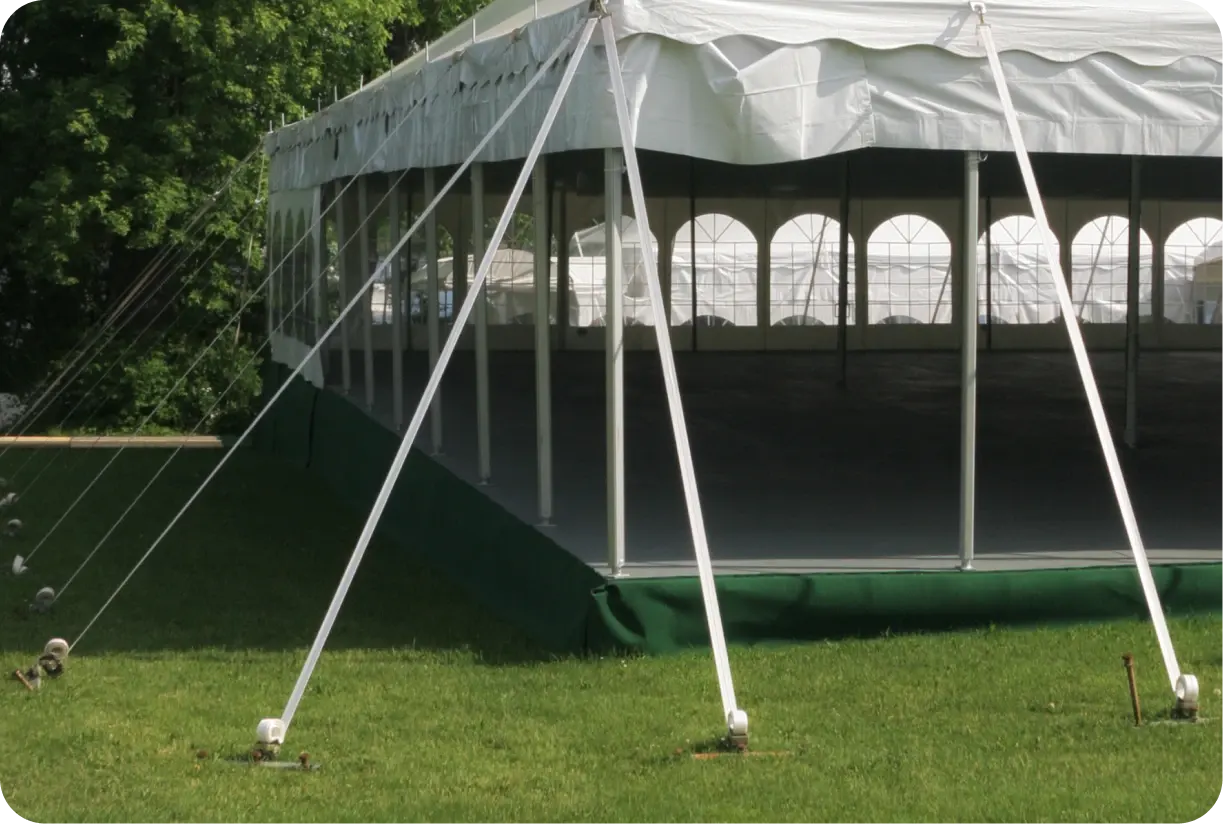
Stabilizing with stakes is one of the easiest and most effective ways to secure a tent or canopy. When installed correctly, stakes can hold a substantial amount of weight and are easy to transport, making them a great choice for outdoor events and grassy areas. However, if you’re on hard ground or poor soil, stakes might not be your best bet.
To properly anchor your canopy with stakes, drive the stake into the ground and secure it to the canopy using a tensioning device. Be sure to clear any debris beforehand so that the stakes go directly into the ground.
One of the best things about stakes is their affordability. Tent stakes are generally low cost, making them an economical choice for securing tents. You can find Hook Tent Stakes for $3.43 each, and Auger Stakes for $9.65 a piece. Prices can vary based on material and design, but they typically remain budget-friendly compared to other anchoring methods.
2. Use Concrete
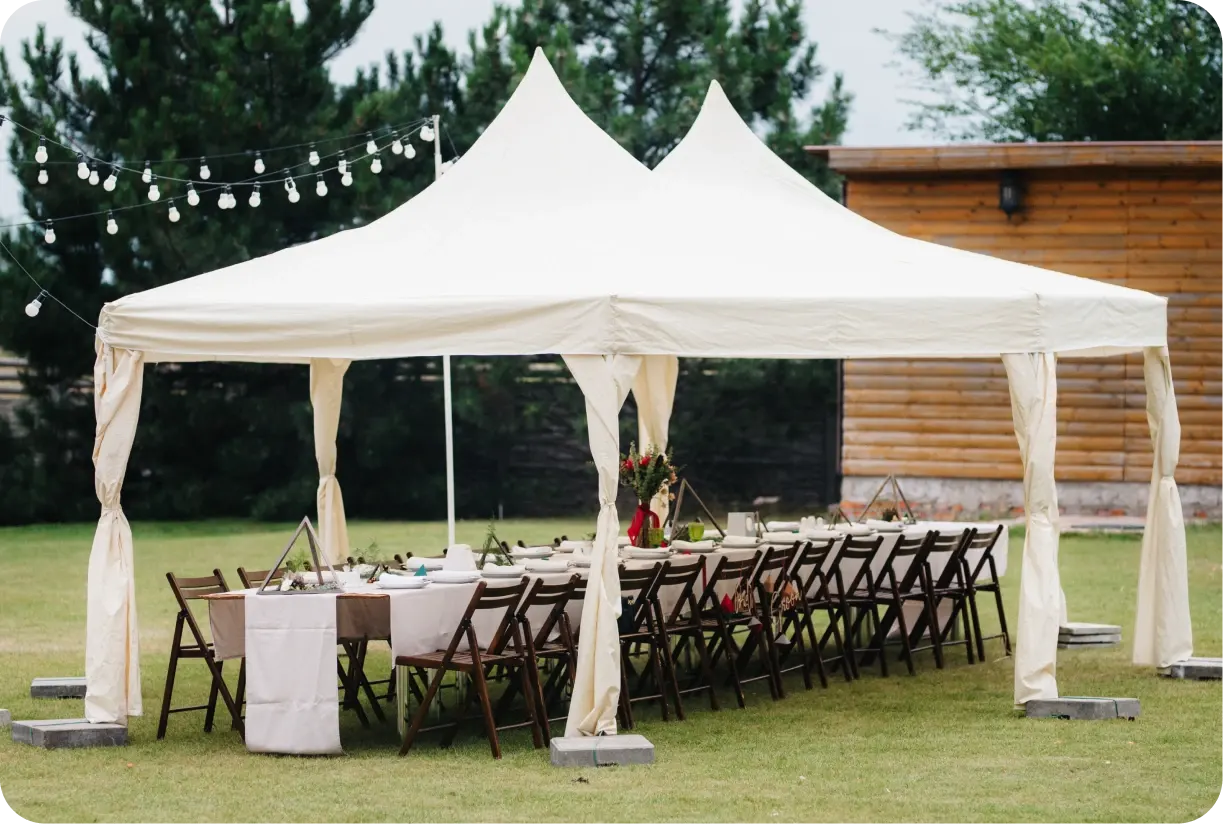
Concrete weights are ideal for anchoring semi-permanent canopy structures on hard surfaces such as a parking lot or patio. They provide a solid solution that withstands weather conditions, ensuring the canopy remains secure and stable even in windy conditions.
Their substantial weight and durability make them ideal for long-term installations, such as a summer farmer’s market or holiday craft fair that lasts several weeks or months, and where frequent adjustments are not needed.
However, the heavy nature of concrete weights makes them difficult and costly to transport and requires careful planning for installation. Additionally, while they are effective, concrete blocks can also be considered an eyesore at formal events, but tent vinyl can be used to cover them up if aesthetics are a concern.
3. Use Water
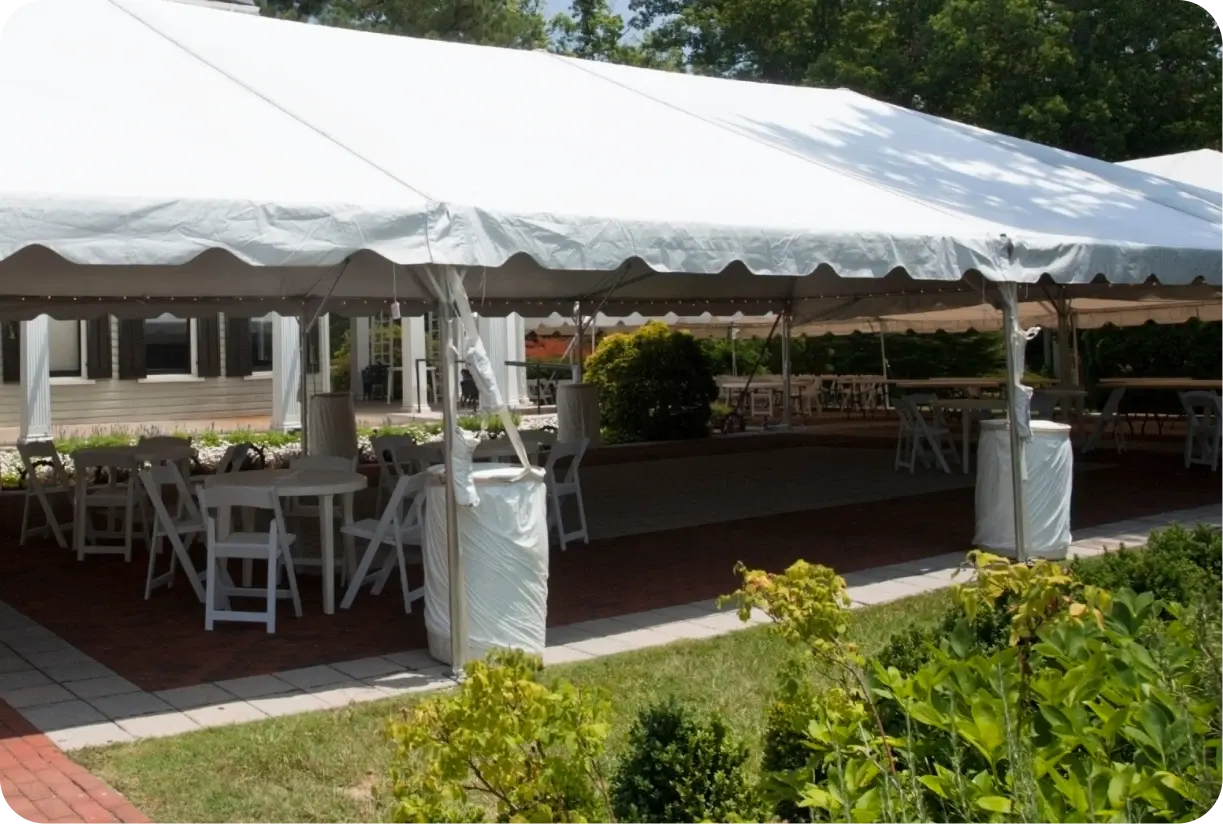
Water barrels are typically rented along with a tent when staking the tent into grass isn’t an option. However, there are often instances of events on grass requiring water barrels, too. There could be items in the ground which could affect installation such as sprinklers, lights, or invisible fencing.
Did you know that in addition to our event rental software, Goodshuffle also has a rental marketplace?
While water barrels are nowhere to be found on our top 25 searched rental items on Goodshuffle, they are our number 6 most rented item. This is because people don’t realize they need them when they’re initially thinking about renting a tent.
The main advantage of water barrels is that they can be emptied after use, making them lighter and stackable for easy transport. Water barrels are very inexpensive and their setup is almost always included in the cost of tent setup.
However, their large, white plastic drum design is not always visually appealing, and their rubber surface can cause them to slip. In bad weather, they may fail to secure tents properly, posing hazards to both people and property.
4. Use Sand
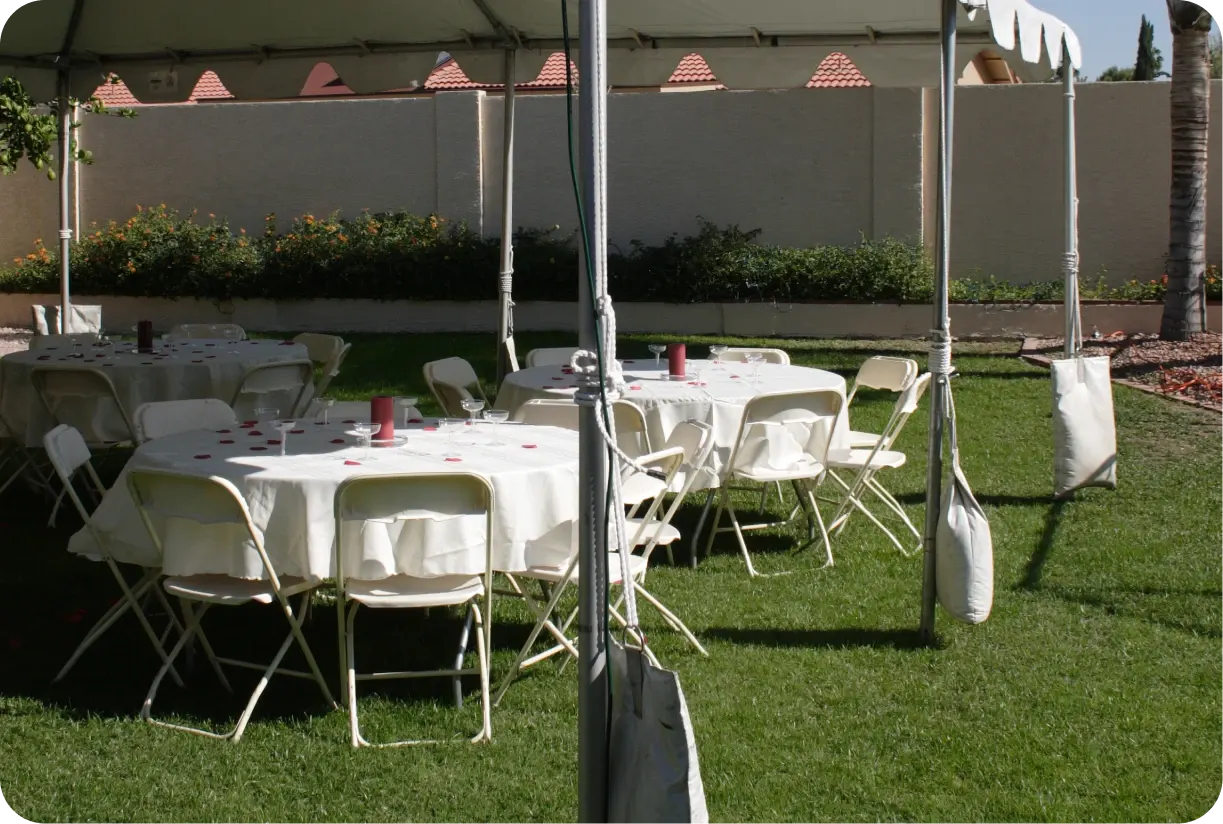
Sandbags are a popular option for stabilizing canopies on hard concrete surfaces and during windy weather. While they are commonly used for smaller tents, sandbags can also be effective for larger ones thanks to their ability to add extra weight with sand or pebbles. Each bag can hold between 30 to 50 pounds, and for even greater stability, you can pair sandbags with tent stakes.
Sandbags are easy to transport when empty, and can be filled on-site. However, it’s important to note filling and positioning them can take some effort and over time, they may wear out and require replacement. If you’re looking for a small and cost efficient weight, sandbags are a solid option.
Pro Tip: Use Goodshuffle Pro Packages
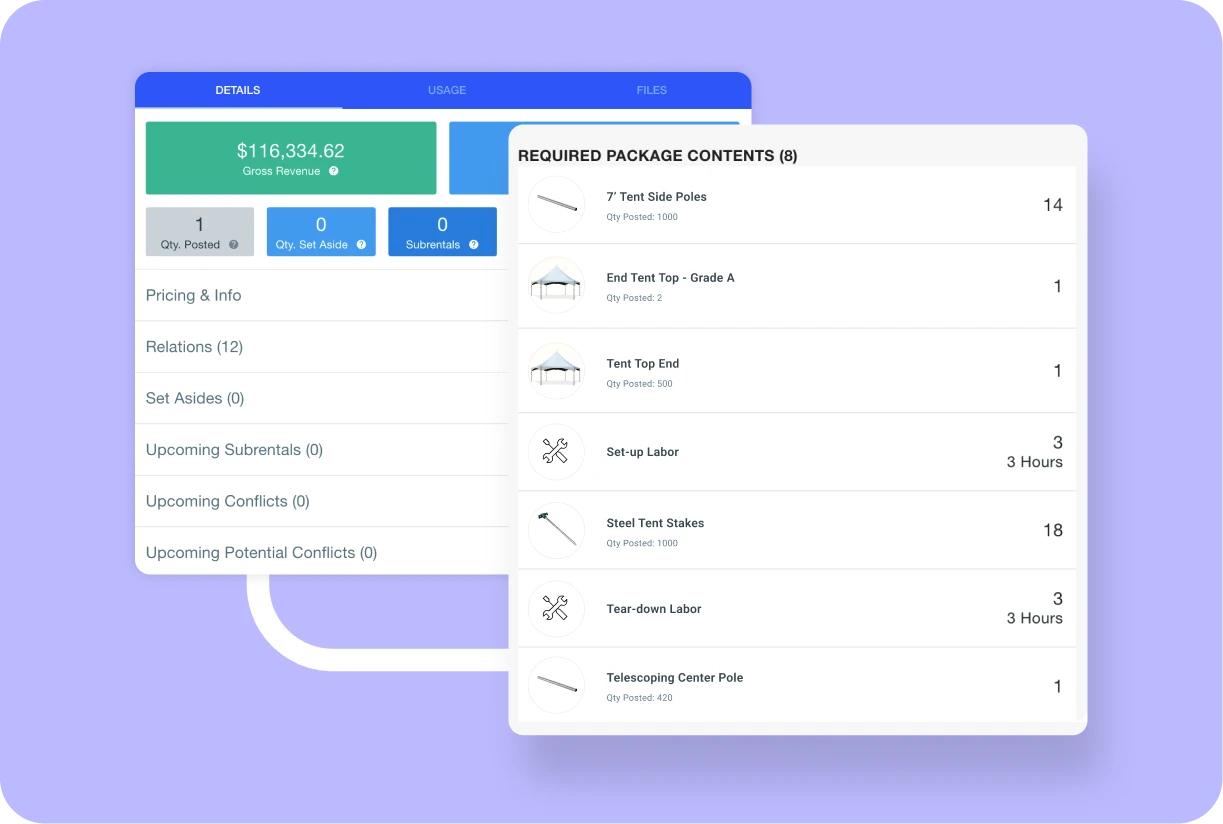 Goodshuffle Pro is an all-in-one event rental software that allows you to manage your kits, streamline your sales, and simplify your day-to-day. With Packages, you can group your frequently rented items together and create custom tent kits with all the parts, pieces, and services required for setup.
Goodshuffle Pro is an all-in-one event rental software that allows you to manage your kits, streamline your sales, and simplify your day-to-day. With Packages, you can group your frequently rented items together and create custom tent kits with all the parts, pieces, and services required for setup.
Creating tents as Packages prevents items that are used in multiple tent rentals, like poles, from being double booked.
By using packages, you can mark items such as poles, stakes, or water barrels as hidden, so your client won’t see them on their quotes and invoices. Your team will be able to view these items on their pull sheets, and ensure nothing will be forgotten.
And hey, if you include water barrels or other anchoring methods in your packages, you’ll be ready when unexpected winds arise without even having to think twice!
✨ Top 10 Reasons Tent Companies Love Goodshuffle
Now That You Know How to Secure a Canopy…
… It’s time to put your skills to the test. While securing a tent in high wind conditions may seem near impossible sometimes, when you know what you’re doing it’s a fairly simple process — especially once you really get to know your tents.
